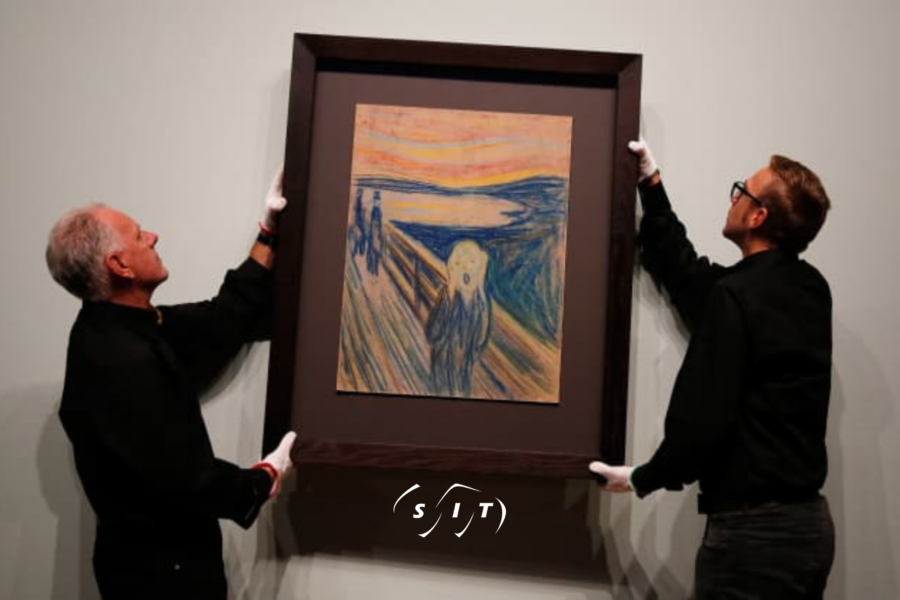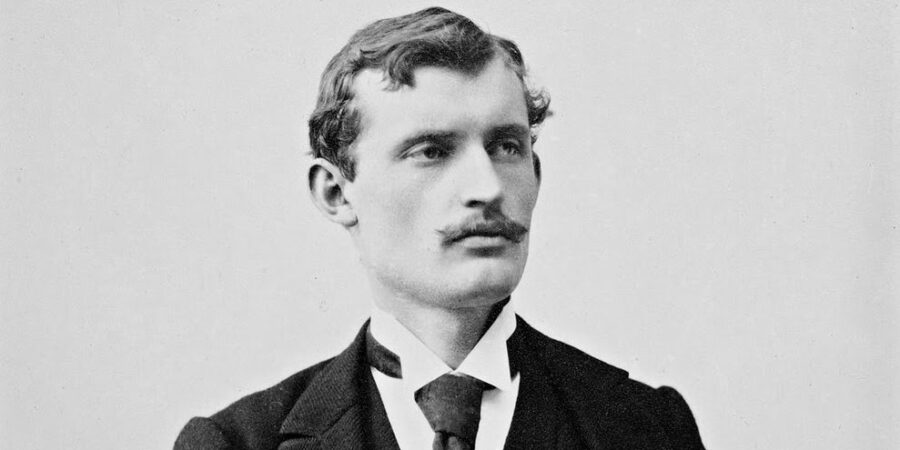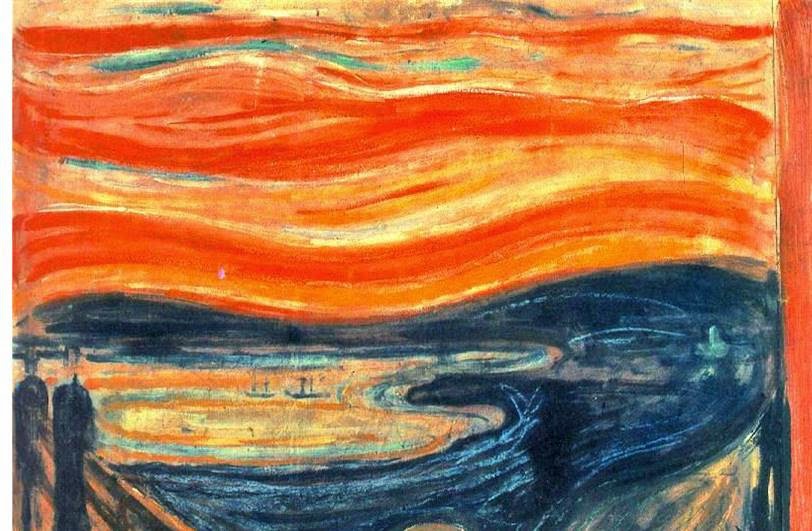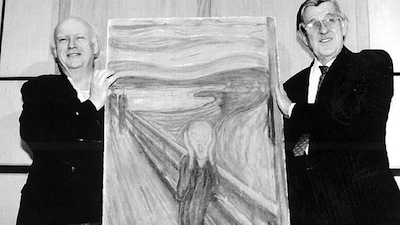
In the vast universe of art, there are works that transcend the canvas to touch our souls in unimaginable ways.
One such painting is Edvard Munch’s “The Scream”. In this in-depth look, we will immerse ourselves in the profound anguish embodied in this masterpiece and unveil the multiple layers of meaning that make it an icon of modern art.
“The Scream” was created by the Norwegian painter Edvard Munch in 1893.
This painting is not just an image, but an explosion of emotions in colour and form. In it, a solitary figure stands on a bridge with a dark, twisted landscape behind him.
His face is a mask of despair, and he seems to cry out silently as two blurred figures walk in the background.

To understand The Scream, we must look beyond the canvas and consider the context in which Munch lived.
The painting was created at a time marked by personal and social crises. Munch lived through traumatic experiences, such as the death of his mother and his struggle with mental illness. In addition, Europe was immersed in a period of social and technological change that generated anxieties and fears.

The colours in “El Grito” are powerful and expressive.
The red and orange of the sky contrast sharply with the blue of the water, creating a sense of chaos and anguish. The central figure, with its elongated and distorted head, brings a sense of depersonalisation and alienation.
One of the reasons why “The Scream” is so timeless is that it allows for a variety of interpretations. Some see it as an expression of existential anxiety, while others see it as a reaction to social pressure. Its ability to evoke universal emotions has made it a widely recognised and studied masterpiece.

The influence of “The Scream” extends beyond painting. It has inspired writers, filmmakers and other artists to explore similar themes of alienation and angst. In addition, the work has been the subject of numerous interpretations and parodies in popular culture.
Conclusion
Edvard Munch’s “The Scream” is a masterpiece that continues to move and captivate viewers around the world. Its power lies in its ability to convey the depth of the human experience and the universal anguish we all face at some point in our lives.
This painting is not only a work of art, but a mirror that reflects our own emotions and anxieties.